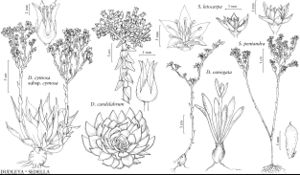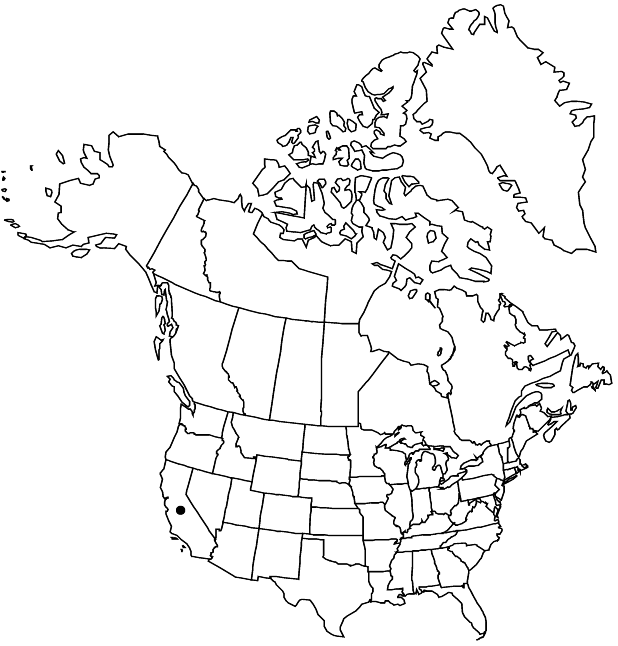Sedella leiocarpa
Madroño 5: 192, fig. 1(1, 3, 4). 1940,.
Plants 0.2–0.5 dm, often with 1–3+ simple, ascending branches; hypocotyl 0.3–1.5 cm. Stems 2–5-noded. Leaf blades to 0.4–0.7 × 0.4 cm. Cymes 1-branched, 2–10-flowered, 1–2 cm. Flowers 3–4 mm diam.; calyx base tapering to pedicel; petals first ascending, soon erect, separated, later appressed to utricles, yellowish becoming pale, closely red-lineolate except margins, narrowly lanceolate or arcuate, 2.5–3.5 × 0.5–0.9 mm, apex subacuminate; stamens 5; pistils 1.5–2 mm, subglabrous; styles erect, 0.2–0.4 mm. Utricles ascending, 2–2.5 mm. Seeds 1–1.3 mm. 2n = 18.
Phenology: Flowering spring.
Habitat: Dry vernal pools and clay flats
Elevation: 500-700 m
Discussion
Of conservation concern.
The utricles of Sedella leiocarpa have a conspicuous ventral flange 0.2 mm wide. The plants grow in dense colonies; the species is very local, thus far found in only two places, south of Clear Lake, Lake County.
Selected References
None.

